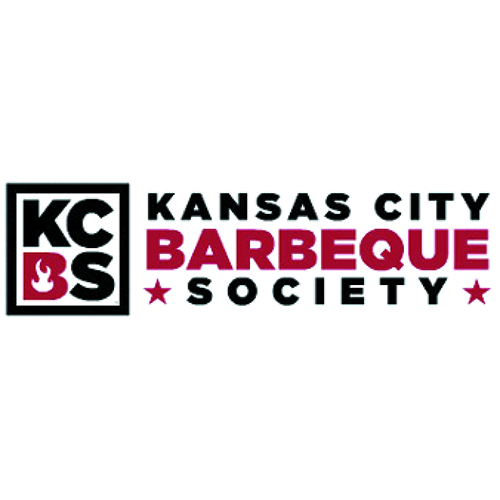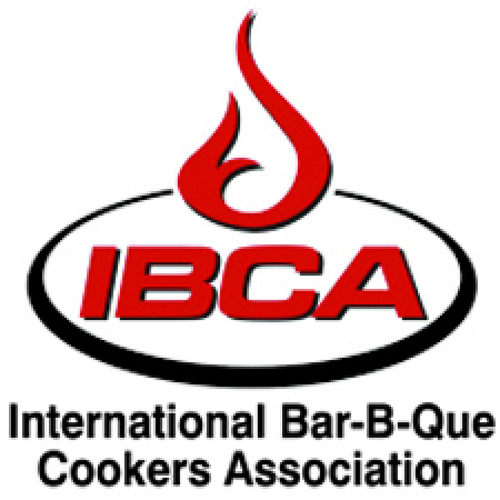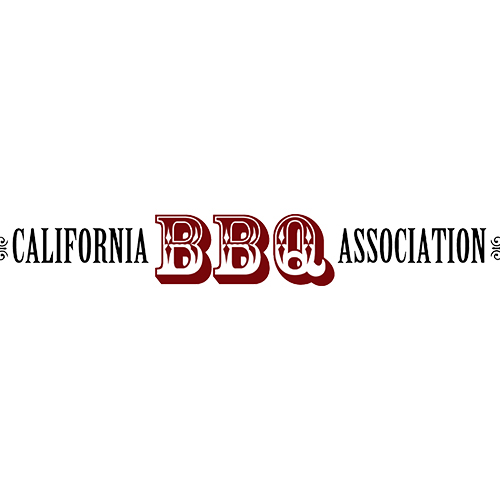The Future of Barbecue Meat
 By Ardie A. Davis AKA “Remus Powers”
By Ardie A. Davis AKA “Remus Powers”
BBQ Hall of Famer
All Photos Courtesy Of Ardie Davis
When I first learned about experiments with rats, pigeons, and dogs by psychologists John B. Watson, B.F. Skinner and physiologist Ivan Pavlov, their findings made sense. However, when they inferred that humans, pigeons, rats and dogs behave with predictable similarities, I was skeptical.
After years of examining my own behavior and the behavior of others, I have begrudgingly accepted that Watson, Skinner and Pavlov gave us valuable insights into why we do what we do. Today we are faced with the possibility of extreme changes in our meat diet. Marketing tools derived from Watson, Skinner and Pavlov, enhanced on hi-tech platforms, will have everything to do with future meat production and consumption.
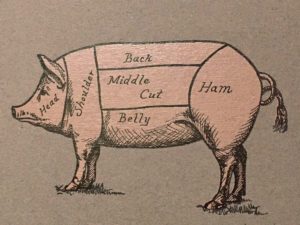 Introducing the new meats Mealworm, grasshopper and other insect meat aside, major research and development aimed at future meat production centers on two options:
Introducing the new meats Mealworm, grasshopper and other insect meat aside, major research and development aimed at future meat production centers on two options:
1.Plant-based meat & 2.Laboratory-grown meat from live animal stem cell extractions. Both methods skip raising and slaughtering animals for meat.
The most successful plant-based meat available today is the “Impossible Burger.” More than a thousand restaurants in the USA, from Alabama to West Virginia plus Hong Kong have added it to their menu. Impossible Burger’s parent company, Impossible Foods, is a Silicon Valley startup. I have eaten several Impossible Burgers at metro KC’s Houlihan’s in Fairway, Kansas. It looks more like a finely ground large sausage patty than a ground chuck burger, yet it looks more like a meat burger than a veggie burger. It tastes like a real hamburger. My only regret is that it is pan-grilled instead of flame-grilled. I was told that the patty doesn’t hold up well over open flames or hot coals, but that the Impossible team is working on a fix. Meanwhile I like it as is.
If you are gluten-intolerant, be advised that the Impossible Burger contains wheat. Mass production of real animal meat grown in laboratories from poultry, pork, beef, lamb, goat or other animal stem cells is cost-prohibitive today. Yet, research teams in Silicon Valley, the Netherlands and elsewhere are racing to produce affordable laboratory-grown meat for mass consumption that looks, cooks and tastes like today’s meat.
Today’s new meats landscape is populated with companies such as Memphis Meats Inc., Modern Meadow, SuperMeat, Finless Foods, Beyond Meat, Hampton Creek, Intigriculture, the Good Food Institute, and Impossible Foods. Hundreds of millions of venture capital dollars from China, Israel, Bill Gates, Richard Branson, Cargill, Tyson Foods, Atomico, New Crop Capital, Fifty Years, Inevitable Ventures and other sources are streaming into new meat research and marketing initiatives.
The stakes are high. Our agribusiness network is a multi-billion dollar mix of family and corporate farms, ranches, animal bioscience
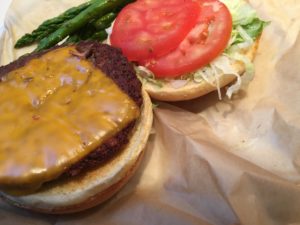
Impossible Burger with cheese, shredded lettuce, fresh tomato slices on a toasted bun, with grilled asparagus side from Houlihan’s, Fairway KS; $11.50 plus tax & gratuity.
laboratories, veterinary medicine, livestock transport, feedlots, meat processing plants, product marketing, product distribution systems and point-of-sale/online retail/wholesale markets fueled with enormous amounts of grass, grains, antibiotics, growth hormones, energy, water and jobs. A paradigm shift to meat production from a few living stem cell donors that thrive on a smidgeon of the natural land and water resources required to raise, slaughter and process billions of animals per year would be a radical change.
Will today’s meat industry shift to plant-based and stem cell-based meat production? Some say it is inevitable, others disagree. If it happens, how soon will it happen? Predictions range from 6 months to10, 20 or 30 years from now.
Will competition barbecue adapt to the new meats? One of the first questions friends raised when I mentioned possible future meat industry changes during recent discussions was, “What about bones?” I don’t know, and haven’t found answers yet. For now I’ll assume that competition barbecue teams will have a choice between anatomically correct lab-grown chicken, beef and pork meat parts with or without bones. But how about whole hog competitions, plus restaurants and social gatherings that feature whole hog?
Will whole hog survive as a competition barbecue category? My guess is that whole hog barbecue—as iconic as apple pie in our barbecue world—will be the last holdout. While scientists work toward reproducing whole anatomically correct hogs with everything but the squeal, a special corps of hog farmers will raise hogs to provide the whole hog contest, restaurant and social gatherings network with a steady supply of hogs. I haven’t found answers to the following questions:
– How will the new meats be labeled? Marketing experts need help with this.
– What about organs, intestines, and other animal parts now classified as offal? No more chitlins? What about tongue, snout, and ears? No more beef tongue pastrami? No more pig ears and rice? No more pig snoot sandwiches?
– What about cowhides and pigskins? No more leather? No more pork rinds?
– Will bones be produced for gelatin and marrow or will there be substitutes?
– Is meat grown from stem cells kosher?
– Will mass production of chicken eggs cease? How about the millions of recipes that include real eggs?
If alternative meats cost less, cook and taste as good as or better than today’s meat, they will prevail in future barbecue contests, meat markets, supermarkets and restaurants. The simple equation derived from behaviorism, and used by marketing experts for decades—Rewards minus Costs equals Outcome—has everything to do with the future of barbecue meat.
“We shall escape the absurdity of growing a whole chicken in order to eat the breast or wing, by growing these parts separately under a suitable medium.” – Sir Winston Churchill, The Strand Magazine, 1931, “Fifty Years Hence”


